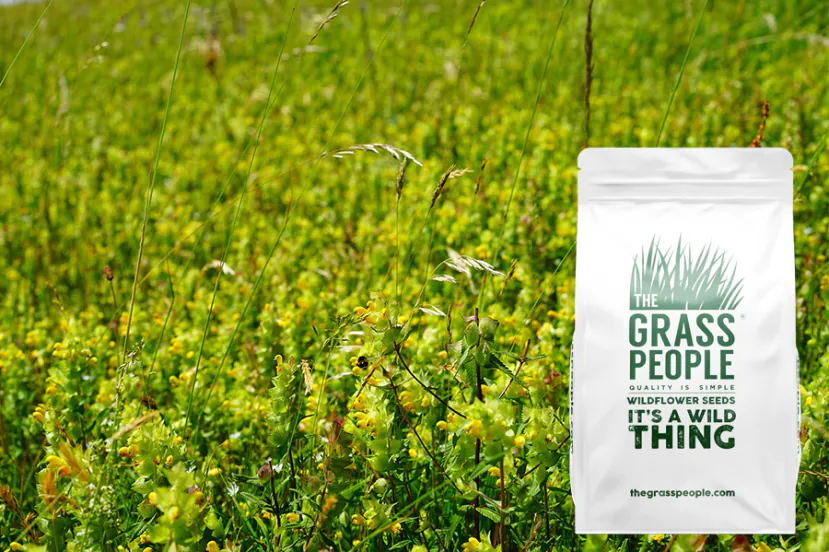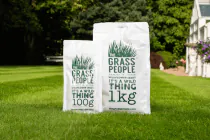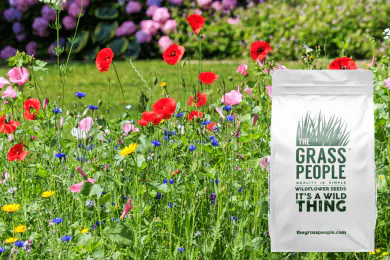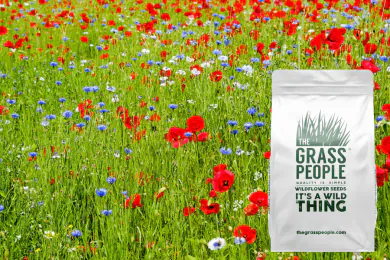Yellow Rattle Wildflower
- Helps to outcompete weeds in your meadow
- Weakens existing grasses so that its flora can flourish
- An attractive perennial that delights year after year
Please refresh the page in 1 minute to see the next delivery time.
How much do I need?
Simply enter the length and width of the area, to calculate how much you need.
Product Description
Yellow Rattle Pricing: Due to limited supply our suppliers charges have gone up dramatically. This will be reflected in our retail price and it will probably remain high until next year.
Often described as the 'meadow maker', Yellow Rattle can be used in existing meadows where meadow grasses have taken over. It helps to weaken these grasses to allow other wildflowers to flourish, and does this by locking its roots to those of the grasses, and therefore lessens their abundance. This mix is made up of 100% UK native yellow rattle and is particularly good at attracting bees and pollinators as an RHS Plants for Pollinators approved wildflower.
Mixture Breakdown
May - September
What colour is it?Yellow
Annual or Perennial?Annual
Latin NameRhinanthus minor
DescriptionYellow Rattle can be used in existing meadows where meadow grasses have taken over. It helps to weaken these grasses to allow other wildflowers to flourish, and does this by locking its roots to those of the grasses, and therefore lessens their abundance.
Usage Guide
● Cut your grass as short as possible at the end of summer and scarify your existing meadow / grassland with an aim to achieve 50% bare / exposed soil
● Sow your Yellow Rattle before winter sets in (do not leave sowing any later than November) – it will germinate and bloom in early spring and begin to weaken the existing grasses.
● Scatter the seed at a rate of 5g per m2 and rake the seed so that it is in amongst the soil
● Water the just-sown wildflower seed well
● If sowing in drought conditions, water as required to keep the area moist in the first 6 weeks after sowing
Read our full guide on how to manage your wildflower meadow here.
| Sowing Rate | 5g per m2 |
| When | For best results sow in September, do not leave sowing any later than November |
Aftercare
End of year cut:
- We recommend doing this essential end-of-year cut in autumn.
- Your wildflowers are ready for their first cut when they have grown to 7cm and have gone to seedhead.
- This cut can be done using your lawn mower at its highest setting or using a strimmer.
Early spring cut:
- An early spring cut is ideal when your wildflowers are well-established.
- This early spring cut trims back meadow grasses and helps increase the density of the wildflowers.
- This cut also encourages wildflowers to grow better later that season.
- Cut before the end of April, or you may stunt their growth, and they could skip blooming that year.
Summer cut (optional):
- A cut between June and August can encourage the growth of wildflowers later in the season.
- Cut back to 7cm tall and remove the cuttings.
- This optional cut encourages new wildflowers to grow and flourish.
What to do with the cuttings (if you have annual wildflowers in the mix):
In dry conditions:
- If conditions will be dry for 5-7 days, you can let the cuttings lie on the ground so the seeds drop.
- Walk over, use a roller or shake the seedheads to encourage the seeds to fall and grow next season.
- Then remove the plant cuttings after a week and dispose of them in your garden waste bin.
In wet conditions:
- Lift the clippings if rainfall is forecast, and manually free up the seeds by crushing the seedhead to collect the seeds for replanting.
- When dry conditions return, scatter the seeds across your wildflower area.
- Alternatively, you can store your collected wildflower seeds in an envelope and replant them later.
For further reading, check out our guide on when and how often to cut a wildflower meadow.
The above photo depicts the variety of species you should expect to see in your wildflower display. Please note that certain species within this mix and all our wildflower mixes may become more abundant than others, and this varies based on the conditions in which they are sown. Taking this into consideration, your wildflower meadow will evolve and adapt year after year and change in appearance as certain species may become more dominant than others.
Product Questions
Product Questions
Also, with a partly shaded area should I mix both shaded and "regular" wildflower batches? Thank you :).
It is still early in the season but you can except to see more in the way of bloom as temperatures increase.
Any of the mixes with grass, when sown at the same time, the grass will shoot up first to create a nursery for the wildflowers, the grass will germinate when temperatures are 8-10 degrees or above consistently for two weeks. This stops weeds from taking over and allows the wildflowers to take root.
Around 60 - 80 days later you can expect to see annuals and a few perennials. Some perennials will flower the first year and others will take up to a year to establish but they will continue to bloom each year.
All our wildflowers are untreated and are 100% natural.







